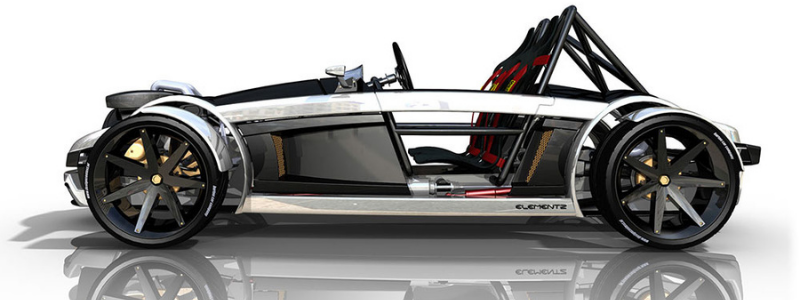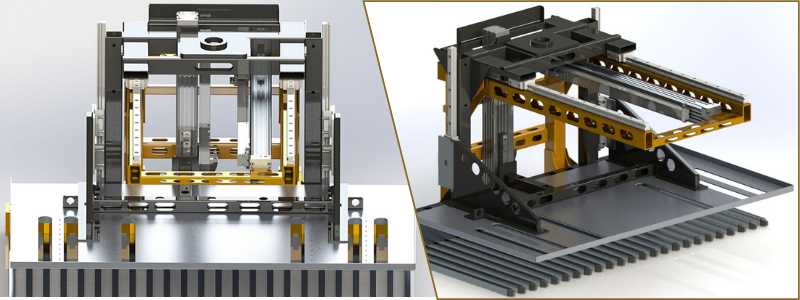The manufacturing industry requires individuals who occupy knowledge of tools and machinery and a solid understanding of the production process. Unlike mechanics who perform repairs and regular maintenance, manufacturers are involved in the manufacturing facilities and equipment design. They will determine which machinery and tools are best to maintain a good balance between cost and quality. For a long time, manufacturers were commonly referred to as “tool design engineers,” although their exact duties and functions within most manufacturing companies remain unclearly defined.
 Table of Contents
Table of Contents
Tool engineer management
There are various definitions of tool design engineering, and the reason is the lack of agreement among experts in what it is or what it represents. At the same time, tool design engineers are a specialized and broad field within the scope of industrial design. Organizations that require a tool design engineering department will set it up according to their specific demands, such as product specifications, business size, and the availability of a qualified workforce in the payroll.
One can say that a tool design engineer is a highly specialized professional with expertise in all sorts of manufacturing equipment, of which the design and application are crucial factors in determining or minimizing production cost. Another person may argue that the job is all about designing and selecting necessary equipment for the economical production of goods in a given quantity.
You will come across various manufacturing-related terms in other definitions, such as planning, analysis, construction, maintenance, efficiency, etc. Therefore it is not surprising to hear varying definitions, but in essence, they are only different versions of the same idea. Despite all the differences, it is pretty clear that tool design engineers have the same objectives: devise equipment to achieve and maintain the desired level of quality in a manufactured product, and accomplish the intended result in the most efficient economical manner.
All the work required to achieve any objective is performed in the manufacturing industry. Historically, humans have continuously lived with tool design engineers. Our ancestors began cutting equipment out of stones and made fishing rods from bamboo. It is a profession that requires you to invent something out of necessity.
RELATED: Design for manufacturing and assembly (DFMA) services for your company

Manufacturing services
Scientific developments and the increasing complexity of modern manufacturing services have introduced several specializations to the engineering field. Some significant groupings known as mechanical engineering, electrical engineering, chemical engineering, civil engineering, and interdisciplinary have sub-disciplines. The management systems, along with the design and utilization of tools and equipment used in the manufacturing process, fall within the scope of industrial engineering. This interdisciplinary branch involves at least:
- Manufacturing engineering to research and develop equipment into the production process to achieve optimum quality and efficient expenditure.
- Component engineering to ensure the availability of proper components required to manufacture products in the desired specifications.
- Safety engineering to check and confirm if the utilized tools and equipment have an acceptable level of safety for the people and the facility.
- Reliability engineering to determine with certainty that the equipment will function under given condition for a specified period of time without failure.
- System engineering to devise effective methods to integrate multiple tools and equipment over their life cycle or the course of production run.
While other designations do exist, those mentioned above are most common. Additionally, there are bound to be many overlapping tasks among those specialties in the same organization. Tool design engineering is a comparatively new field in the manufacturing industry, but not to say that the works related to the study were absent in the past.
The evolution of manufacturing services
Different professionals assumed an engineer’s role and responsibilities, such as mechanics, forepersons, or supervisors. The practice still pretty much exists today in small-scale production facilities. The ongoing expansion of industrial enterprises appended that more goods should go under mass-production, presenting new global challenges to manufacturing companies.
For example, every single engineered system needs to meet government-written safety standards. Companies may want the equipment interchangeable to facilitate production runs of multiple parts without exhausting financial resources. However, environmental issues such as recycled materials and emissions from fuel-powered machinery should be considered.
With all these challenges come opportunities for a more specialized study in the design and utilization of manufacturing equipment. Not only is a fresh analytical approach necessary, but it must be done by individuals specifically educated for and trained to do the works. The planning, analysis, design, implementation, and integration of manufacturing tools are best left to the most qualified professionals.
There isn’t a standard practice to make organization charts, especially among private businesses, including manufacturing companies. They have the freedom to draw any diagram with any color they like. The charts may differ from one organization to the next. Still, all have the same purpose of showcasing the structure and relationships between the ranks or positions, depending on the types of organizational structure.
Some companies may put tool design engineers under chief engineers or in the general engineering department bracket, while others may place the profession directly below the facility superintendent. There can be other names, too, for example, master mechanic or chief tool designer. Job description holds more critical information than the chart. The role and function of a tool design engineer usually fall between the production department and product engineering.
RELATED: What Engineering for Manufacturing is and How it Helps Product Design Companies

Responsibilities and objectives
The tool design engineering department is primarily tasked with developing equipment solutions to achieve the most economical production process under any restraints of financial considerations, safety and reliability standards, quality requirements, and compatibility with the existing facility. Environmental impact increasingly becomes the most important factor too.
A companies’ desire for greater profitability almost always stands as the foremost challenge. Making a profit is a shared responsibility among everyone in every department in an organization. Although it is not a direct responsibility of tool design engineers, what they do and the equipment used in the production run require expenses that inevitably affect production costs.
Tool engineer’s primary focus is on the efficiency of the manufacturing process. Lowering the cost of production is a major collective endeavor. Tool engineers can contribute to the objective by designing energy-efficient machinery, robotic arms to save on labor cost, multipurpose manufacturing equipment, etc. However, those works are nearly impossible to complete unless collaborating with other departments or engineers of different specializations.
The plethora of tasks involved in the results may include:
- CAD software utilization in the drawing of equipment assembly or design and creating a bill of materials.
- Drawing schematics of existing and new equipment used in the manufacturing process.
- Fabrication of prototype equipment including robotics and conveyors.
- Configuration of facility layout for more streamlined workflow on production or assembly line.
- Documentation of CNC manual codes for various applications required in the manufacturing process of parts and finished products.
- Supervision of tools and equipment maintenance and repair.
- Implementation and management of complex online networks along with Internet security measures.
Part of the responsibility is to establish collaboration with product designers and engineers. All tools and equipment facilitate a more economical manufacturing process. Therefore, detailed information and a good understanding of product specifications will be the foundation for tool design engineers to exercise their skills effectively. Greater product information accuracy equals better tool design, less frequent maintenance routines, and a higher level of evenly quality products. Armed with accurate information about the intended quality of products and the production capacity of the facility itself, they can:
- Choose the best manufacturing methods
- Design and select the proper range of equipment in the manufacturing process
- Ensure compatibility of new equipment with the existing available platform
- Procure the required tools and machines
- Supervise equipment installation
- Establish the efficient sequence of work in the production line
- Consolidate everything into a streamlined plan
- Estimates the cost of equipment installation, maintenance, and overhead
Overview
To summarize, the term “tool design engineers” is pretty self-explanatory. They design and engineer new tools or improve the existing ones for the manufacturing process of products. They are responsible for optimizing manufacturing operations by lowering the cost of tools and equipment without undermining compliance with safety and reliability standards.
It is safe to say that all manufacturing companies, regardless of the product, yearn to produce goods of the highest quality at minimum production cost. It is a significant concern of tool engineers (and everyone else involved, for that matter) tasked to always come up with new ideas, inventions, and discoveries for optimizations.
Selecting proper machines and designing efficient equipment reduces wasteful resources, possibly resulting from frequent machine breakdowns and expensive maintenance costs. Many of their ideas will bring greater company profits, and some may even contribute to the advancements of the manufacturing industry at large.
How Cad Crowd can help
Not only do we offer manufacturing services! We helped thousands of clients create their vision and turn it into reality with our professional CAD design services. Find an expert CAD designer to transform your idea into a workable design. Get a free quote.
